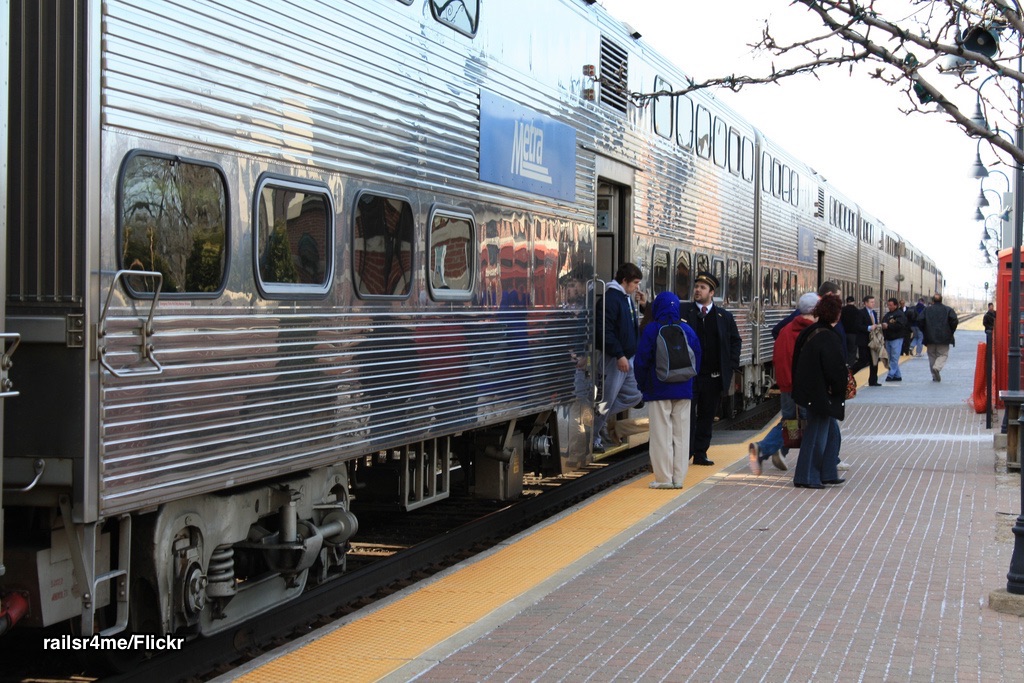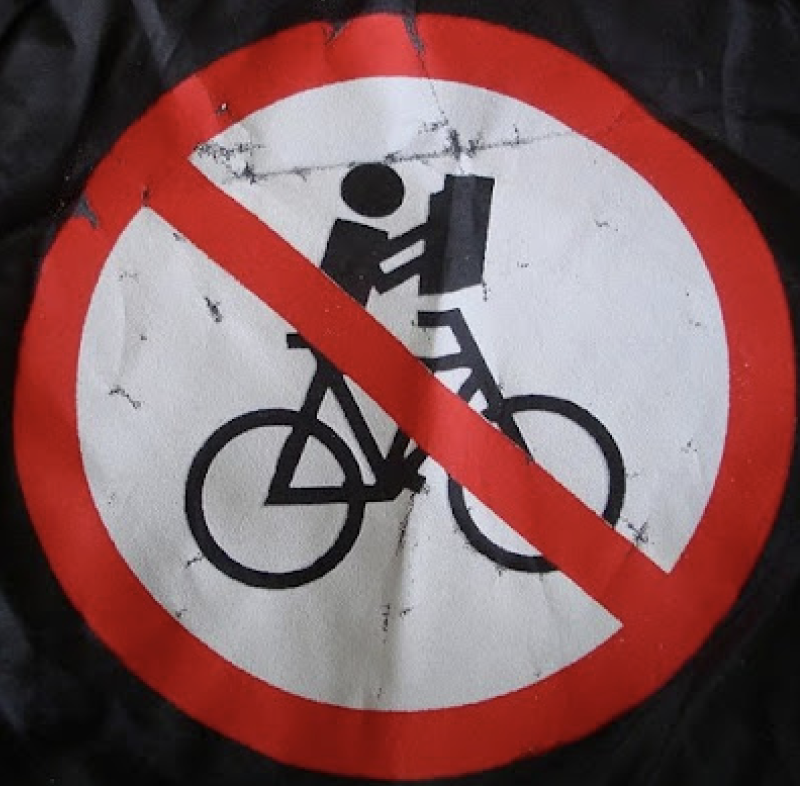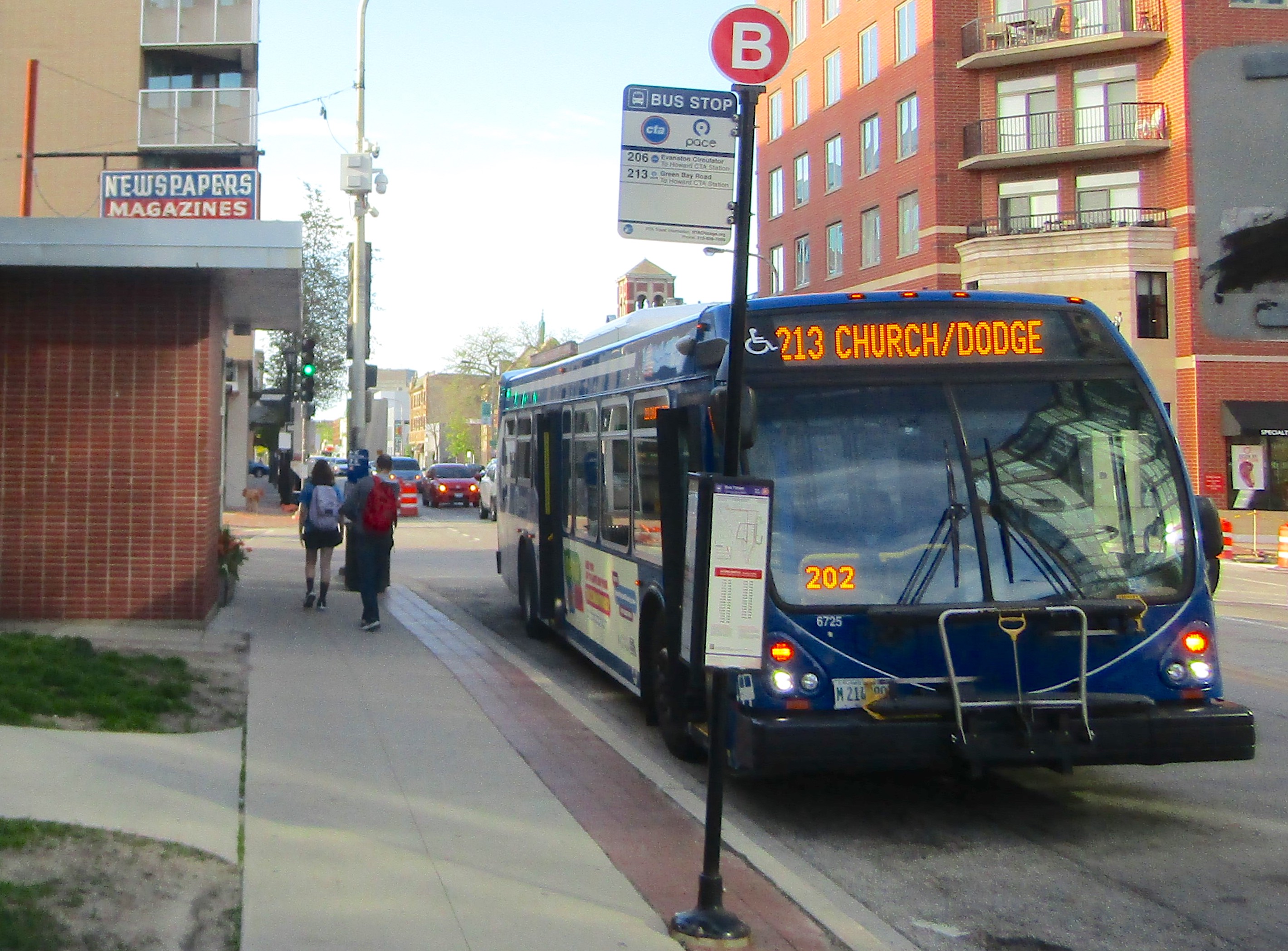Chicagoland Transit Agencies are Asking for the Capital Funding They Deserve
2:34 PM CDT on August 21, 2018

Some of Metra’s coaches were built in 1953. Photo: railsr4me/Flickr
The Regional Transportation Authority and the three transit agencies operating under its umbrella – Chicago Transit Authority, Metra and Pace Suburban Bus – are making a forceful case for substantially more capital funding than they are currently getting.
The federal and state funding for public transit has been declining over the last 10 years, not just in Chicago area, but in Illinois as a whole. The three agencies have long complained that the capital funding they get isn't nearly enough to handle a significant backlog of needs – including repairing and replacing infrastructure, buying new equipment and expanding services. But it wasn't until this summer that they put everything together in a single unified proposal, laying out exactly what each agency needs and how much it would cost to cover it.
RTA was originally created in 1974 to subsidize municipal and private transit services. Its role has evolved several times in the ensuing decades. Today, it is largely a financial and oversight body – it has the final say over the transit agencies' budgets, and it helps fund both regular operating and capital costs.
According to RTA's July 13 press release, last year, it released three “seasonal” videos to highlight the transit agencies' needs. This summer, it released the 2018-2023 Regional Transit Strategic Plan, which delved into more detail. And, on Aug. 1, RTA released a new video (shown below) to make the case for why it was important to fund the plan's projects.
As the plan explains, the transit agencies get their capital funding from a combination of federal grants and loans, state funding and local funding from combination of bond sales, farebox revenues and funds from municipalities that transit systems service. With federal funding declining and the State of Illinois not putting together a capital program since 2009, the transit agencies had to come up with other ways to get the funding.
Metra has been raising fares every year since 2014, while the City of Chicago approved the Transit TIF to fund the improvements on most of the Red and Purple line north of North Avenue, and Pace worked with Illinois Department of Transportation and Illinois Tollway to expand bus services along the expressway.
But the plan argues that this barely begins to scratch the surface.
"The Transit Agencies face a State of Good Repair backlog of $19.4 billion, which includes projects that could not be completed on-time due to the lack of capital funding," the plan states. "Over the next ten years, the agencies will also need to rehabilitate assets in order to help them achieve their full potential and replace assets that are due to reach the end of their minimum useful lives."
In other words, the agencies need to replace aging trains and buses, repair and build stations and bus terminals, expand service, and repair and replace rail embankments and other infrastructure that has been in place for decades, if not longer.
As the plan notes, the equipment replacement is a major concern, since the longer it is used past its standard useful life, the more it costs to maintain and repair it. According to RTA's Mapping and Statistics data portal (RTAMS), nearly a third of CTA's 'L' trains were built 30-40 years ago. CTA is looking to spend $1.6 billion to replace them.
Out of 1,113 Metra train cars, a total of 367 cars – a little under a third of the entire fleet – were built between 1953-1980. Metra is looking to spend a total of $2.1 billion to both repair and replace the train cars and locomotives. Two years ago Streetsblog Chicago got a tour of a Metra track switching controller operating since 1937.
Pace is better off than the other two agencies – even the oldest buses were built in 2002 - but according to the plan, Pace is looking to spend $177 million to replace fixed-route buses, $51 million to replace vanpool vehicles and a total of $193 million to replace paratransit vehicles and other ADA-related infrastructure.
While the lion's share the funding would go replacing old vehicles, as well as maintaining and improving the infrastructure that's already there, CTA and Pace are also looking to fund some new services. CTA is looking to cover about half of the $2.3 billion necessary for the long-promised Red 'L' Line extension, $454 million for track reconstruction on Blue Line's Forest Park branch, $200 million for unspecified “street and traffic signal improvements” to speed up bus service, $42 million to build a new training center and $150 million to replace an “obsolete” transit control center.
Meanwhile, Pace is looking to spend $94 million to buy new buses necessary for new routes and services, $69 million for new bus storage facilities, $10 million to expand traffic signals that would give priority to buses under certain conditions, $13 million to expand its fleet of paratransit venhicles, $3 million to add call-n-ride vehicles, $51 million to expand Pulse Arterial Rapid Transit bus service, $15 milllion to build new passengers facilities for bus routes along the highways, and a total of $33 million to add new bus shelters and bus stop signs.
All of that comes with a hefty price tag - $37.7 billion over the next 10 years. The plan is proposing the investment of around $2-3 billion a year – which would generate between $20 billion - $30 billion in funding. But the plan argues that not addressing the backlog on projects would only make the matters worse. Aging vehicles would make service less reliable, projects would get held up for so long that their costs will increase, and ridership would drop and service will be reduced as transit agencies struggle to stay competitive against private vehicles and ride-sharing services.
That last part is particularly important, the plan argues, since public transit still has many advantages.
"Public transit has lower out-of-pocket costs than car ownership," it stated. "Transit fares are also predictably consistent and low compared to new mobility options that are priced based on a continually updated computation of time, distance, and demand. Public transit also gives riders the opportunity to use travel time productively instead of focusing on the road. Transit is faster and more predictable than driving in many corridors."
While ride-hailing and driving will have a place in Chicago area, the plan argued, the key is to ensure that public transit remains an attractive option – and that requires investment.
The plan offers a few general ideas about how to get that funding. That included some combination of creating new revenue service and expanding the existing ones – for example, raising gas taxes, property taxes and/or fees. It also called for “pricing strategies that both fund transit and encourage transit ridership including congestion pricing, private mobility regulation, and parking.”
The plan also suggested that private investment should play a role.
“Activities could include small investments such as joint marketing, service subsidies, and maintenance partnerships,” the plan stated. “Activities also include continuing to explore the potential for public-private partnerships and more prevalent value capture mechanisms.”
The plan also called for applying for more federal grants and working with Chicago Metropolitan Agency of Planning and other agencies to encourage transit-orientated development.
For now, the transit agencies will continue campaigning for the funding that would make the plan a reality.
"Transit is central to our city, region and state," RTA Executive Director Leanne Redden stated in the plan. "We have to find a way to make it a priority. In a place where transit has existed in some form for 100 years, it’s easy to take in for granted; we have to tell riders and legislators that we literally can’t afford to do that."
Stay in touch
Sign up for our free newsletter
More from Streetsblog Chicago
Since COVID, Pace ridership has fared better on major corridors and in north, northwest suburbs than in south, west ‘burbs
The suburban bus system's top five busiest routes largely maintained their ridership rankings.
Due to incredible support from readers like you, we’ve surpassed our 2023-24 fundraising goal
Once again, the generosity of walk/bike/transit boosters is fueling our reporting and advocacy.




